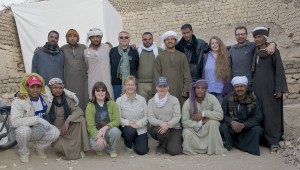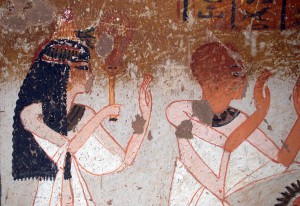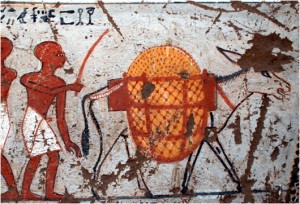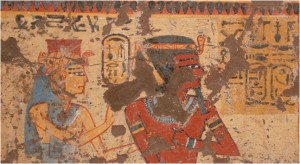This blog will follow the work of the University of Memphis mission to Theban Tomb 16 in the Dra abu el-Naga section of the Theban necropolis. This tomb was built for individuals named Panehsy and his wife Tarenu who lived in Thebes during the reign of Ramesses II of the Egyptian 19th dynasty (ca. 1250 BCE). The tomb has two lovely painted plaster rooms and a long tunnel leading to what we hope will turn out to be the burial shaft of the original owners. They were not the only ones to use the tomb, however, and we are currently focusing effort on clearing the massive amount of secondary burials left in the tunnel. These interments were, unfortunately, looted in the 20th century. Modern artifacts including cement bags, nails, and other ephemera found mixed in with the broken bodies and mummy wrappings give us clues as to when this happened. Other looting in the tomb includes painted plaster wall scenes that were sawed out and removed from the tomb between the early 1960s and the 1980s. Photos from a couple of sources show the undamaged walls in the early 1960s but damaged by the 1980s. It is unknown if the looting of the wall scenes and the looting of the secondary burials was accomplished at the same time. I will deal with the looting issues in more detail in a separate post.
There are many fascinating aspects of the decoration of the tomb, including two representations of a temple facade, a braying donkey, two scenes of the tree goddess, two scenes of Hathor of the mountain (a funerary aspect of the goddess Hathor), and depictions of the deified Amunhotep I and Ahmose-Nefertari. Pahesy was a priest in the cult of Amunhotep I who was during the Ramesside era considered a powerful oracular figure. Villagers would approach the statue when it went on a procession through the community and ask it questions. It was Panhesy’s job to carry the statue and perhaps even interpret the god’s response. Panehsy was also a chanter in an Amun temple. The most likely location for his service to Amun is Karnak temple, and at least one of the temple facades probably represents the Ramesside pylon at Karnak. Tarenu was also a chantress in the cult of Amun.



